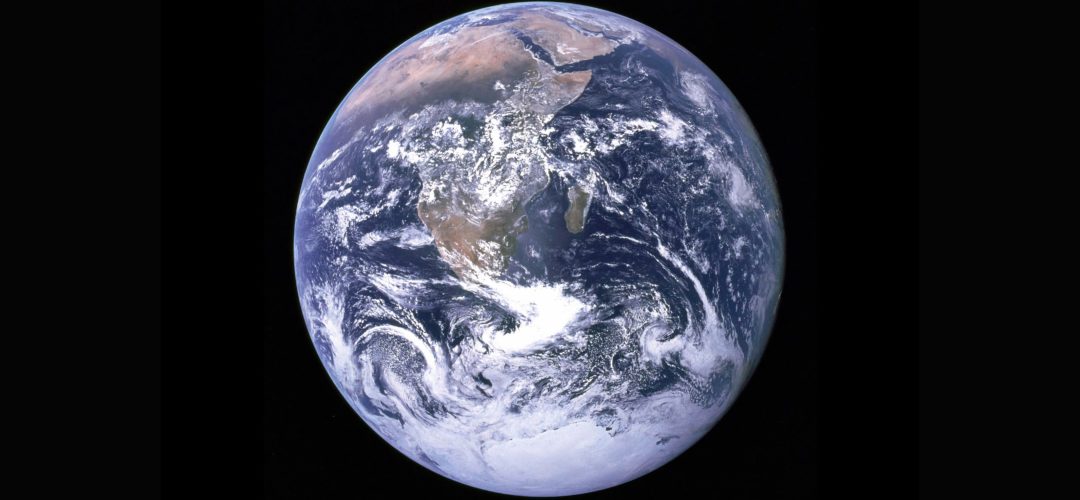Climate Change and Philanthropy: A Topic Brief for Donors
November 18, 2021
Climate change—the long-term alteration of average temperatures and weather patterns—is often described as the existential crisis of our time. As global climate change intensifies, so will its impacts, such as rising sea levels, extreme heat weather events, drought and famine, wildfires, species extinction, new infectious diseases, and human displacement. While climate change affects everyone, it often disproportionately affects Indigenous groups, people of color, and low-income communities, and other groups sometimes known as “frontline” communities because they are frequently the first to experience the impacts of climate change-related weather events.
Scientists have identified greenhouse gas emissions—especially from the burning of fossil fuels such as coal, oil, and gas—as the biggest driver of global climate change. Deforestation and industrial agriculture are also among the contributors to the crisis.
Preventing further irreversible damage from climate change will require a rapid transition away from fossil fuels and toward cleaner energy sources, accompanied by increased adoption of sustainable agriculture, forestry, and land-use practices. Simultaneously, responding to existing climate impacts requires investing in infrastructure and systems to protect people, communities, and the natural environment.
Who is Working to Address Climate Change?
Communities, individuals, governments, businesses, nonprofits, and researchers all have a role to play in addressing the climate crisis and bringing a variety of approaches. Influential players include:
- Frontline communities, activists, grassroots groups, nonprofits, and NGOs that advocate for a more just and sustainable future.
- Scientists and researchers who uncover the consequences of climate change and devise solutions to address the crisis.
- Artists and communicators who work to raise awareness about climate change or to help imagine more sustainable ways of living.
- Businesses committed to achieving carbon neutrality or that are implementing sustainable practices in areas such as agriculture, clean technology, food, housing, and transportation.
- National and local governments committed to policies that aim to reduce carbon emissions or accelerate the adoption of cleaner energy sources.
- Philanthropists who fund climate-related initiatives, build support networks, invest with a climate-first lens, and use their influence to push for climate solutions.
Philanthropy Trends
In recent years, more funders have recognized the urgency of climate change and have dramatically increased their contributions toward addressing the crisis. News headlines in the past year have highlighted pledges that prominent business leaders and philanthropists like Jeff Bezos, Laurene Powell Jobs, and Michael Bloomberg have made to combat climate change and protect the environment. And in a recent survey of the philanthropy sector, four out of five respondents predicted that climate change would be the dominant issue in philanthropy in the next 25 years.
However, while funding for climate change-related work is growing, it is still small relative to the scale and urgency of the challenge—and continues to lag behind other categories of giving. For example, according to a report from ClimateWorks Foundation, total giving towards climate change accounted for only 2 percent of overall giving in 2020.
Examples of how donors are working to address climate change are below.
- Climate justice projects that support grassroots groups and frontline communities most vulnerable to the effects of climate change:
The Climate Justice Resilience Fund supports climate resilience solutions created by women, youth, and Indigenous Peoples focused on water access, food security and sovereignty, sustainable livelihoods, and migration and relocation.
- Research and advocacy for public policies that will cap carbon emissions and accelerate the transition to renewable energy sources:
The Global Commons Alliance is a partnership of more than 50 organizations in philanthropy, science, business, and advocacy focused on developing and achieving science-based targets for Earth’s life-support systems.
- Financing large-scale investments in renewable energy, energy efficiency, and the development of clean technologies:
The Coalition for Green Capital works on policies to finance green infrastructure upgrades that could accelerate the adoption of technology.
- Nature-based solutions to climate change, such as efforts to regrow clear-cut forests and implement regenerative agricultural practices that help remove carbon from the atmosphere:
The Global Alliance for the Future of Food is a coalition of foundations that works to shift food and agriculture systems toward greater sustainability, security, and equity.
- Efforts to preserve biodiversity and protect ocean ecosystems:
Oceans 5 is an international funder collaborative dedicated to protecting the world’s five oceans. The collaborative works to establish marine reserves in places like Seychelles and Arctic regions and to develop policies and regulations to constrain overfishing.
How to Get Started in Climate Change Philanthropy
Organizations like RPA can help advise donors looking to build a full portfolio of climate-related projects. Additionally, membership organizations and peer-learning networks, such as the Climate Action Network (global), Environmental Funders Network (UK), Biodiversity Funders Network (global), and Environmental Grantmakers Association (US), can serve as valuable resources for new donors interested in engaging with issue areas or themes within the climate space.
For donors new to the issue, the scale and scope of the climate challenge can appear daunting. It can seem difficult, if not impossible, to find an area of focus given the complexity of the problem is and the large number of organizations already working on climate and environmental issues. What’s important is for donors to do something by finding an issue or cause that they care about and funding organizations whose work aligns with their interests.
For more information from RPA on philanthropy and climate change, contact Heather Grady or Jon Quinn.
Additional Resources
- Building Coalitions for Climate Justice: A Funders Roundtable (Climate Justice Resilience Fund, Oak Foundation, Mary Robinson Foundation, Rockefeller Philanthropy Advisors)
- Funding Trends: Climate Change Mitigation Philanthropy (ClimateWorks)
- What Can Philanthropy Do for the Climate? Strategic Pathways for Climate Giving (Alliance Magazine)
Infographic (Click to Expand)
Back to News

